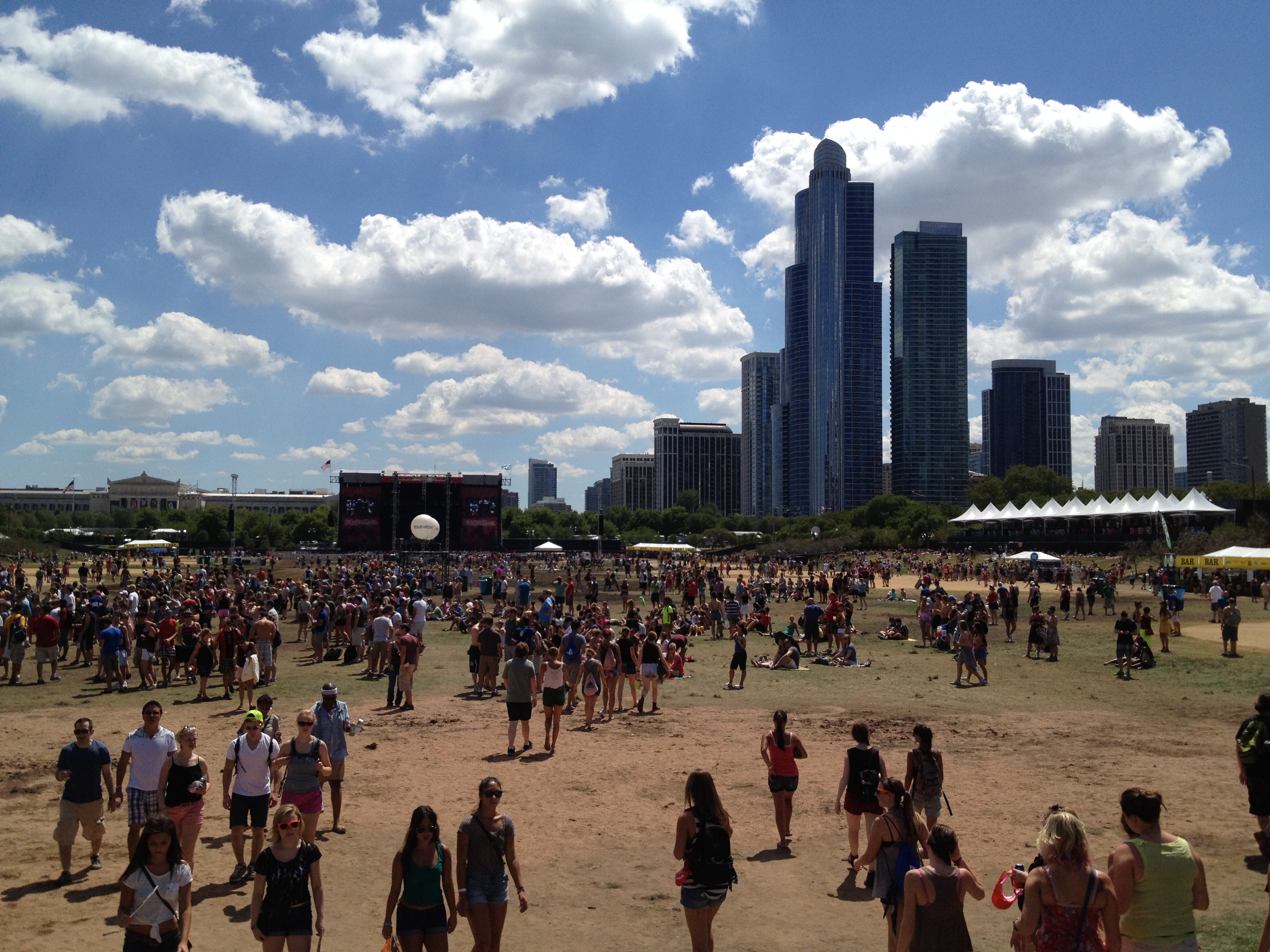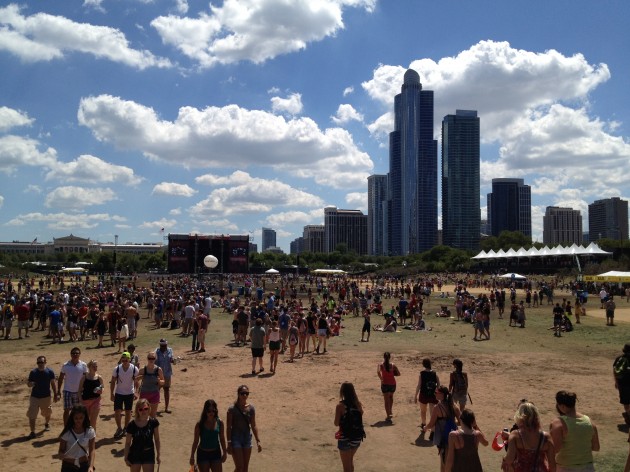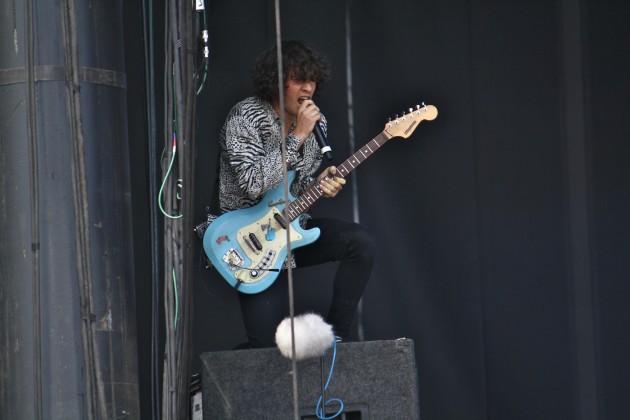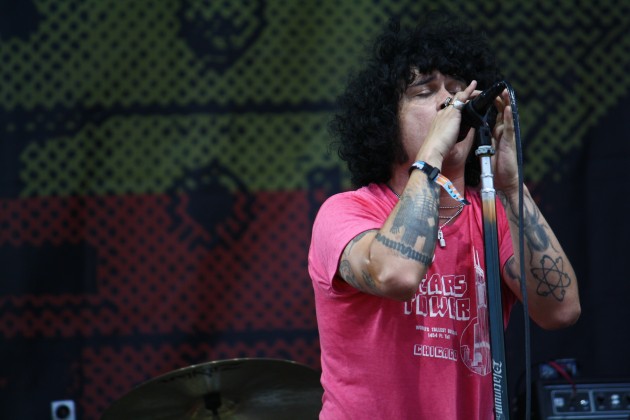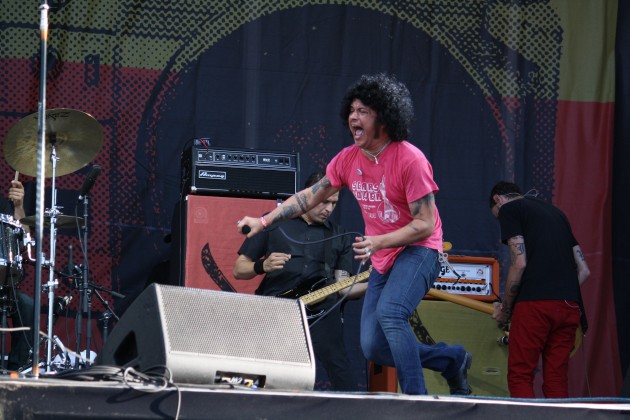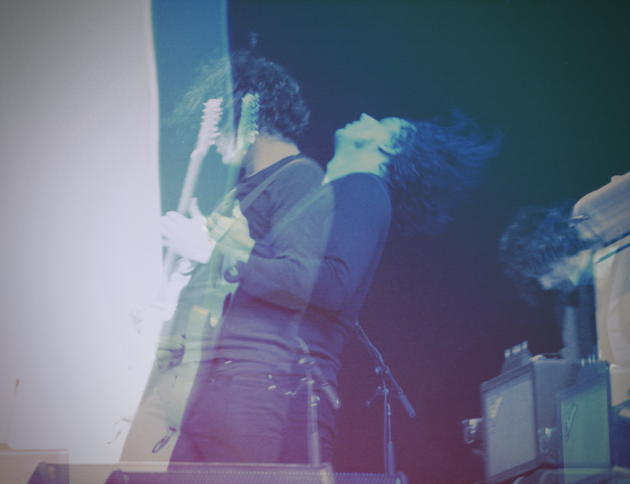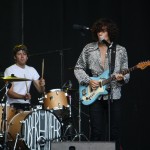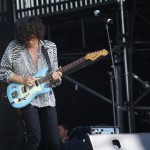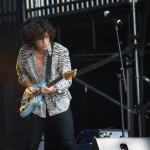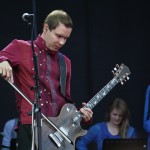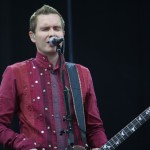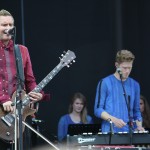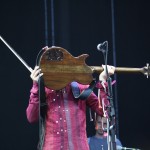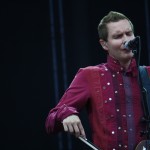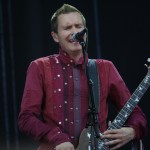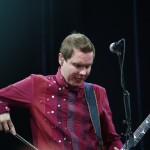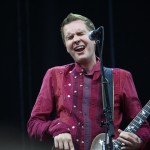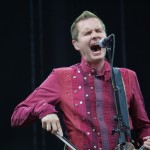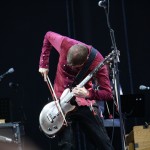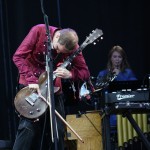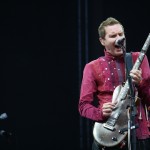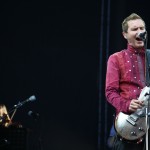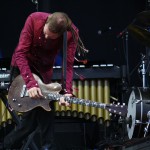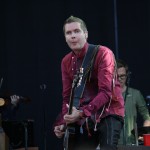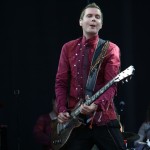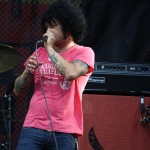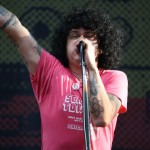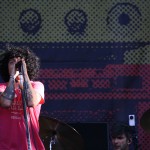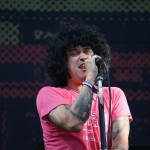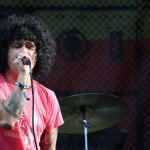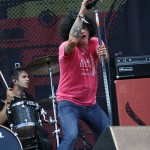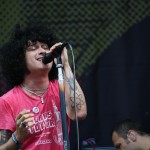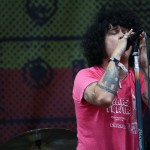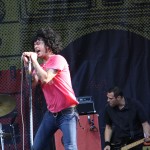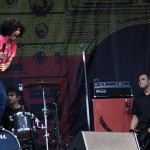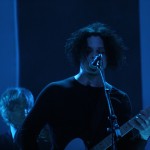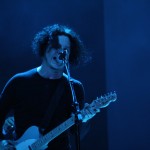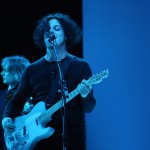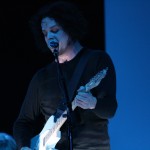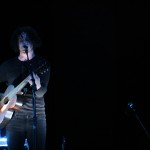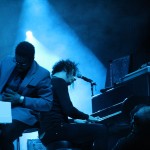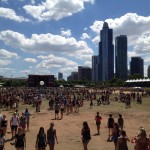I’ve always gotten the feeling that Lollapalooza picked the shortest straw out of the three major festivals we have here in the U.S. (the others being Bonnaroo and Coachella). While I’ve yet to made the trek to the Farm or the Desert, it’s been blatantly obvious during the trips I’ve made here that Lollapalooza is bereft of many of the freedoms allotted to festivals that occur away from big cities. They have to cooperate with sound ordinances (10:00 every night), do a quick job of restoring Grant Park after being desecrated by the masses, and have been increasingly at odds over financial issues with the city of Chicago in recent years. But while Lollapalooza may lack the setting and comprehensive experience aspects of the other majors, they’ve been able to stay afloat commercially and critically by continuing to book acts as popular as any (Red Hot Chili Peppers, The Black Keys), and a few that you can’t see at those other festivals that given year (Black Sabbath, Justice, Sigur Rós). The lineup is too big and too juicy to fail, just like Roo and Coachella.
But, as many of you have surely heard by now, this year’s installation was memorable for reasons unrelated to the acts playing. Just weeks after getting in a spat over evacuation plans (which Lollapalooza refused to release to the public, leading many to speculate that they didn’t exist), the fest was forced to undergo an all-out evacuation on its second day, due to impending stormy weather. Fortunately, the warning was made well in advance, giving everyone plenty of time to find shelter before 50 mph winds and flash floods racked Grant Park. Evacuation plans notwithstanding (they did exist; the festival had designated parking garages ready for attendees, but not even police officers directing the crowds were aware of this), by the time it was over, the festival had acquired a mayoral edict to extend park curfew by 45 minutes, and most of the day’s acts were able to perform with delayed set times. It was an event that overshadows any individual moments; 2012 will surely be remembered by festival-goers as “the year Lollapalooza had to evacuate,” but by the time everyone was let back in, it was as if nothing had happened. The park was a lot muddier, and the set times were altered, but that was about it.
Lollapalooza may originally have been fashioned on the strength of 90’s alt-rock, but 2012’s lineup was more of a hodgepodge of everything that’s happened since then, with an attempt to stay current by expanding the EDM bookings formerly exclusive to Perry’s Stage. Avicii, Bassnectar, and Nero led this contingent. For the last couple years, it’s seemed like most of these EDM artists have reached the peak of their commercial popularity, only to play even bigger stages the following year. One has to wonder how much staying power they have, but whether it’s a lot or a little, they’re putting a huge dent in the festival circuit right now. One of Lollapalooza’s strong points this year, when it came to scheduling, was grouping artists with a lot of fanbase crossover together. It’s really a tale of two sides of the park; the north end was home to the majority of the festival’s electronic artists (excluding those that played Perry’s), while the sound end was heavy on indie rock. And when I say “indie rock,” I’m using the loosest definition of the term. Everyone from the progenitors of the “genre”’s various 21st century incarnations (At The Drive-In, Bloc Party, The Shins), to bands on top of their game right now (M83, The Walkmen), to indie’s brightest rising stars (Oberhofer, Tame Impala), was put on showcase, to varying degrees of success.
On one hand was M83, whose set closing out Sony Stage was an obvious highlight of Day 1. They’re clearly a band that is having its “moment” right now, and they took full advantage of it with a set that was as focused on the dance-able aspects of their music as the sweeping synth/shoegaze crossovers that have gotten them here. It’s hard to argue against the unifying power that “Midnight City” has over audiences in 2012, but reworked versions of “We Own The Sky” and “Coleurs” reached peaks just as high, and old favorites like the sky-scorching “Teen Angst” fleshed their set out nicely. And on the other end of the spectrum was Bloc Party. I only caught the latter half of their set, thanks to their puzzling conflict with Franz Ferdinand, but from what I saw, Bloc Party’s performance was akin to a roller coaster. Even years after the excitement over them has vanished, “So Here We Are,” “This Modern Love,” and “Helicopter” are undiminished as festival heavy-hitters, but for every moment that reaffirmed those songs’ power, Bloc Party seemed intent on screwing the atmosphere up. The worst of this was after the tender climax of “This Modern Love,” when Kele implored the audience to show that they weren’t “a bunch of pussies” before bludgeoning through “Ares.” Franz Ferdinand, meanwhile, came through with a much stronger, more even-keeled set on the other side of the park. New material fit seamlessly with old, and the audience was more than willing to dance in the mud to anthems that have already been accepted as classics by a generation of fans young enough to have grown up on Franz, and for this to be their first time seeing them.
Although obviously not as prevalent as it was in the festival’s formative years, 90’s alt-rock is still a prime ingredient for Lollapalooza in 2012. Besides the ever-present Red Hot Chili Peppers, Afghan Whigs and At The Drive-In both did reunion gigs right by convincingly playing as if they never left. Greg Dulli’s cult-like following was out in full force for Afghan Whigs’ 4:00 slot on Day 1, and the band delivered with a set that focused completely on their “classics,” with the exceptions of new covers of Marie ‘Queenie’ Lyons’ “See And Don’t See,” and Frank Ocean’s “Lovecrimes.” On stage, Dulli is a rather magnetic performer, and the Afghans’ unique approximations of gritty soul (“66”) and unhinged alcoholic freakouts (“Miles Iz Ded”) were a welcome boost to what had been a somewhat lackluster day up to that point. I was a little worried about At The Drive-In after watching the webcast of their Coachella performance, where none of the band members appeared to give much of a shit. But in person at Lollapalooza, this couldn’t have been further from the case. Cedric Bixler-Zavata’s stage banter won “Best In Show” at the festival, and bookending with “Arcarsenal” and “One Armed Scissor” ensured an electrifying start and finish to a set that broke down the thickened fourth wall of the festival stage better than any act I saw over the weekend.
Psychedelic rock is a must-have for almost any major outdoor festival, and for Lollapalooza this year, that meant Tame Impala and The Black Angels. Tame Impala’s set stayed remarkably true to their recordings – the second that the opening “Solitude Is Bliss” began, the guitars jumped from, well, normal-sounding to that same submerged tape sound they have on Innerspeaker. And it was a good thing, because Tame Impala’s music is well-suited for the festival environment. The Black Angels, meanwhile, didn’t translate as well; they sounded just fine, but their lack of presence was swallowed up by the enormous stage they were placed on. The Shins played a solid set to warm up the main stage for the Black Keys, but with a completely revamped lineup and sound, they seemed more like a Shins cover band fronted by James Mercer than the same guys that made “Australia” and “New Slang.” The Black Keys, on the other hand, sounded like they always have; the only difference between this and their Lollapalooza 2010 performance that I caught was the size of their crowd and the presence of a lights show.
With bands like The Shins, Bloc Party, Afghan Whigs, and At The Drive-In on the lineup, it wouldn’t be blasphemous to say that this year’s Lolla lineup was a little lacking in artists that are in their prime right now. They did snag Frank Ocean, but even he seemed to be living in the past to a certain extent, playing as many songs from his Nostalgia, Ultra mixtape as he did from his debut LP, Channel Orange. Not that this was a bad thing though, as Ocean’s lithe croon proved to be much richer in person than on record, elevating those Nostalgia cuts to levels just as high as those from Channel Orange and helping put an excellent cap on a chaotic Day 2. And there was also Sigur Rós, who are still in their prime as a live act, but were slotted in for one hour at 4:00 on Day 3 in perhaps the most criminal scheduling decision of the weekend. They only had time for eight songs, but of those eight, about six had more emotional and sonic heft than almost anything else at the festival, which went towards making Sigur Rós my personal MVP of Lollapalooza this year. They only played one song from from Valtari (“Varúð”), but the greatest hits set was perhaps optimal for a band that hasn’t toured for a few years. Naming highlights for a show with such a high ratio of incredible songs is kind of like naming skyscrapers that are tall, but having said that, “Olsen Olsen” and “Popplagið” seemed to tower a little higher over the rest.
Like psychedelic bands, another must-have for just about any major outdoor music festival is roots artists. Although this contingent was relatively sparse on Lollapalooza’s lineup this year, I was able to catch a couple folk and blues musicians over the weekend, namely The Tallest Man On Earth and Jack White. The Tallest Man On Earth was the first act to play following the evacuation on Day 2, and as a result his crowd was considerably rowdier than it should have been for an artist branded as the “Swedish Bob Dylan.” The performance itself, however, was stellar. Kristian Matsson’s stage persona has a strange way of making you feel like you’re in the same room as him, even when he’s up on a gargantuan stage and you’re 100 (or more) feet away, and musically, he makes things look easy. Jack White closed the entire festival with a career-spanning set that included but was not limited to: two backing bands, a road crew outfitted in suits and top hats, and a whole lot of White Stripes songs. Jack White himself took the stage with puffed-up hair and white face paint; a huge contrast to the professional visage he’s been projecting for most of this tour, and wasted no time guiding his band through a set that focused mostly on his “rock” tracks. Songs by The White Stripes, The Raconteurs, and The Dead Weather were all given reworkings so they could be played by his two bands (an all-male band called The Buzzards, and an all-female band called The Peacocks).To see such a wide range of material in the same set was a testament to just how prolific this guy has been over the last decade and a half, and the ferocity of it a reminder that the businessman behind Third Man Records today is just one of the many faces of Jack White.
Upon watching Jack White close with “Seven Nation Army” and the crowds spill out onto Michigan Avenue, still chanting the song’s riff, it became clear to me that Lollapalooza, despite all the obstacles it faced, had come through again. Or perhaps it would be more appropriate to say that Lollapalooza made it through. This year’s iteration of the festival wasn’t all triumph and glory, but considering everything that they went up against, from the city to the weather to their own unruly attendees, Lollapalooza still gave everyone what they paid for. And if that’s not the mark of a festival that’s too big to fail, then I’m not sure what is.

